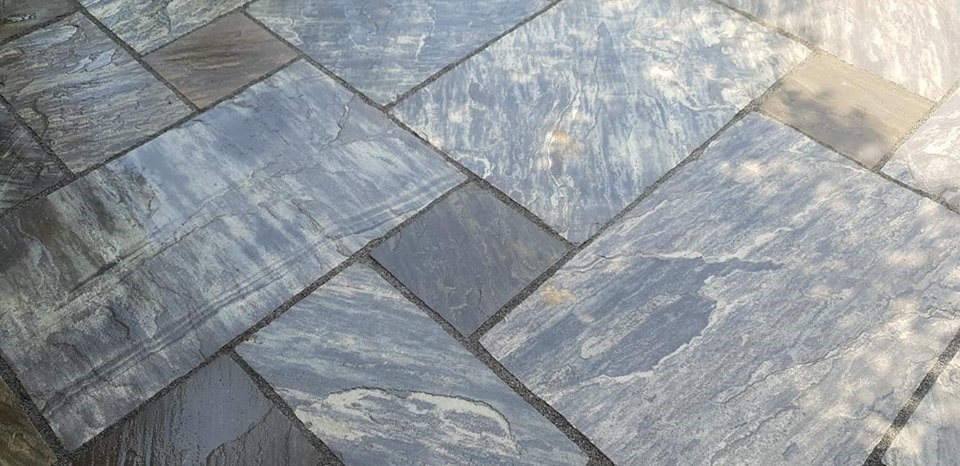Laying paving during winter can be tricky due to frost, rain, and fluctuating temperatures. However, with careful planning, the right materials, and effective techniques, you can still achieve a beautiful, durable result. In this guide, we’ll highlight key tips and considerations for laying paving in the colder months…
Can You Lay Paving in Cold Weather?
Yes, it’s possible to lay paving during the winter, but cold temperatures can affect the mortar curing process and the overall stability of the paving. Always aim to lay paving on days when the temperature is above 3°C, as frost can cause issues with adhesion and longevity.
What Materials Should You Use?
Using frost-resistant materials is essential for winter installations. For example, natural stones like Kandla Grey and Rainbow Sandstone are known for their resilience and slip-resistant surfaces, making them ideal for winter paving. Additionally, ensure that you use frost-resistant mortar and consider adding a water-reducing agent to prevent moisture from weakening the mix.
How to Prepare the Ground
Ground preparation is key to avoiding frost-related issues. Winter conditions can cause the sub-base to shift, leading to unstable paving.
- Excavation: Dig to the proper depth to ensure a solid foundation for your stone.
- Sub-Base: Lay and compact a frost-resistant sub-base, such as MOT Type 1, to prevent movement.
- Drainage: Ensure proper drainage is in place to avoid water pooling, which can freeze and cause frost heave.
How to Lay Paving in Winter Conditions
When laying paving in cold weather, timing and protection are crucial. Choose days with milder weather and ensure that your paving is adequately covered after installation.
- Avoid Frosty Days: Work when frost isn’t expected, and temperatures are above freezing.
- Cover Your Work: After laying the paving, cover it with hessian or tarpaulin to protect it from frost and moisture.
- Work Efficiently: Winter days are shorter, so plan your work carefully and prepare all materials in advance.
Should You Seal Your Paving?
Sealing your paving is highly recommended, especially in winter. Stones like indian sandsonte benefit from a high-quality sealant, which protects against moisture, frost, and stains. Sealing also helps maintain the stone’s vibrant colors and extends its lifespan.
Laying paving in the winter can be a success with the right approach and materials. By choosing frost-resistant stones like Red Modak, Kandla Grey, and Rainbow Sandstone, preparing the ground properly, and sealing the paving, you can ensure a long-lasting and beautiful result. For more insights and a range of options, check out our sandstone paving solutions and read about the pros and cons of sandstone paving.

